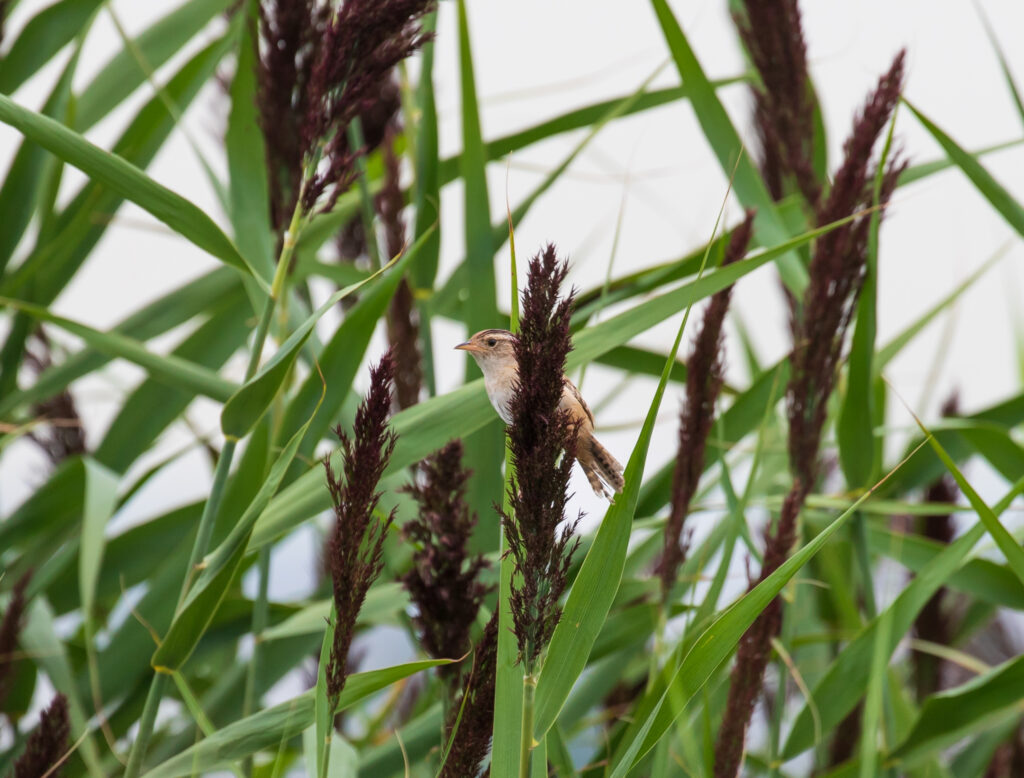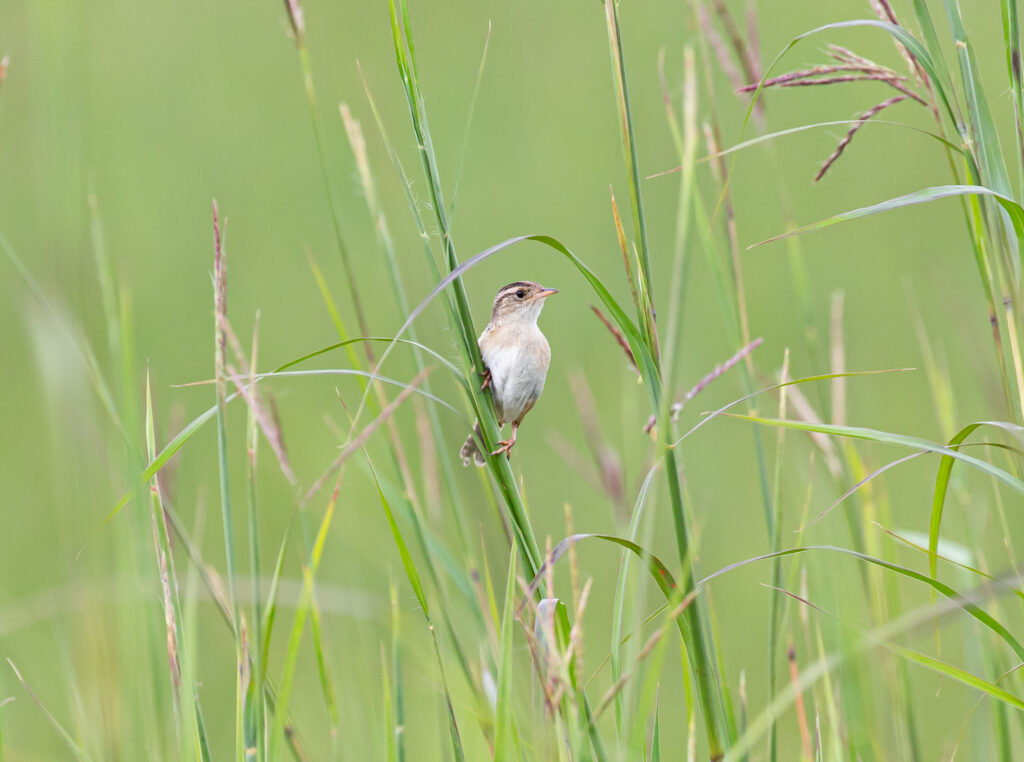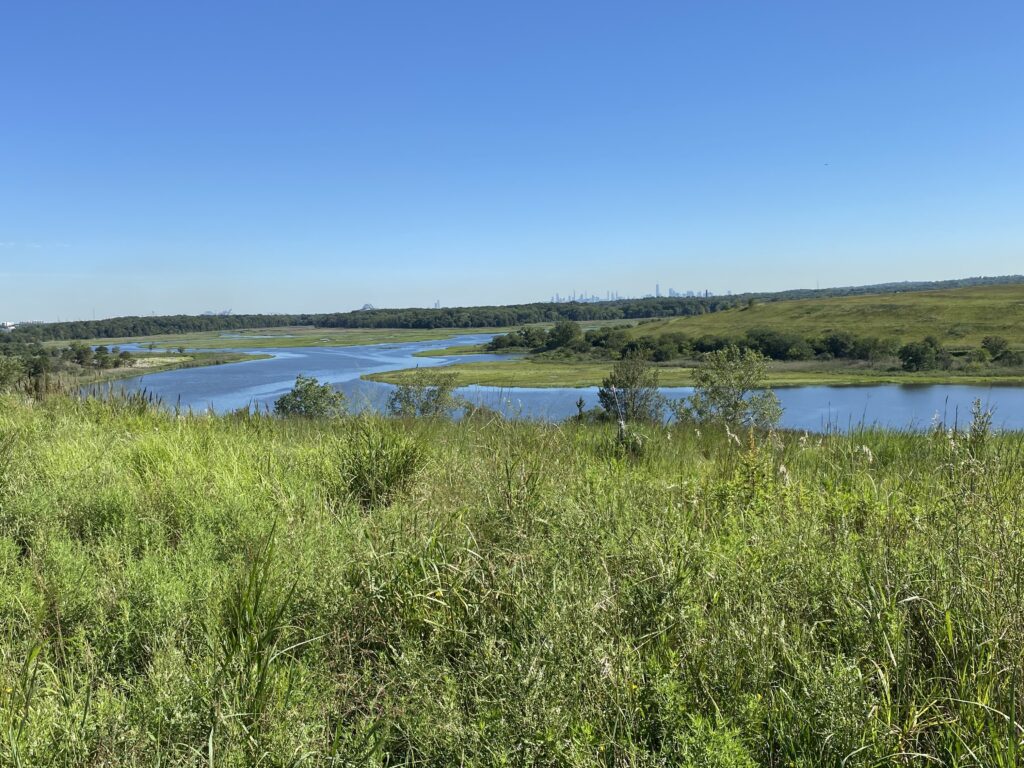Sedge Wren Return to Nest at Freshkills Park
For a second year in a row, Sedge Wren (Cistothorus platensis), have returned to nest Freshkills Park.
Last summer, on August 6, 2020 a singing Sedge Wren was found on East Mound during our bird banding operations. Over the next few days it was joined by three additional singing males, all in close proximity to each other. On September 16, 2020, the first fledgling was found and by 29 September 2020, at least three juvenile birds were present on the East Mound. Prior to this record at Freshkills Park, Sedge Wrens last nested in New York City in 1960, and last nested on Staten Island in 1943.

Sedge Wren, Photo credit: Dr. Shannon Curley
While conducting a routine grassland bird survey on July 12, 2021, researchers heard their unmistakable song on East Mound. As of July 29th, four males are currently singing.
Sedge Wrens are a highly specialized grassland bird species—being very specific in their habitat requirements. They prefer large expanses of tall grasses that remain damp throughout the breeding season. New York State—where they are listed as threatened—is in the northeastern portion of their breeding range. They breed in the state in low numbers, mainly far to the north of New York City. Sedge Wrens can appear at breeding sites erratically, and demonstrate little attachment to these sites from year to year.

Sedge Wren, Photo credit: Dr. Shannon Curley
Much is still unknown about the breeding ecology of this highly elusive species. Sedge Wrens are considered iterative breeders, meaning they may nest earlier in the breeding season in a more northern portion of their range and then travel south to raise a second brood later in the summer. This explains why they arrived at Freshkills Park in early August last year, and in July of 2021, as opposed to May when many of our other grassland birds begin breeding.
Sedge Wrens returning to breed at Freshkills Park for the second year in a row highlights the importance of this site to sensitive and regionally-rare grassland birds, as well as the potential of reclaiming landfills for green space.





